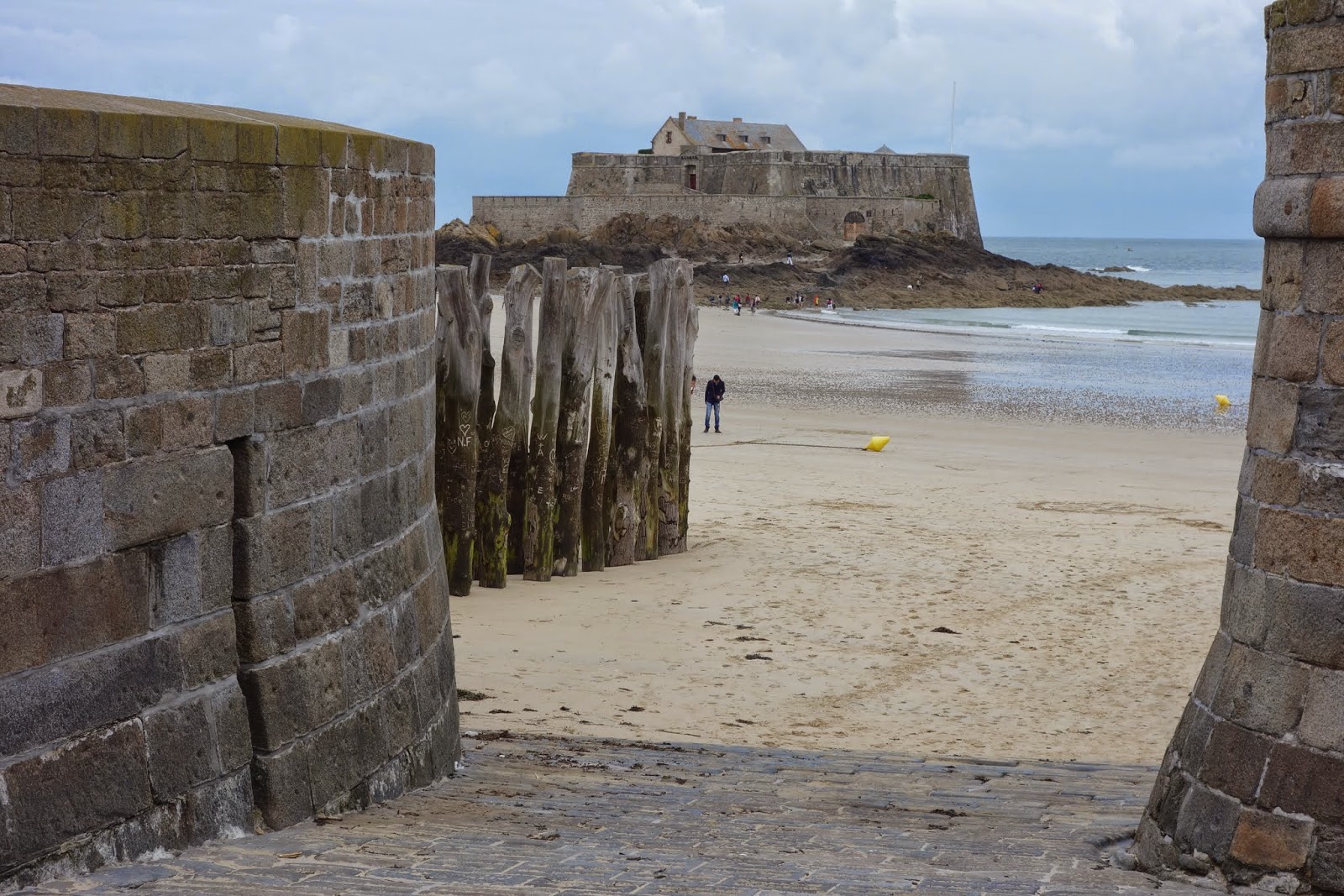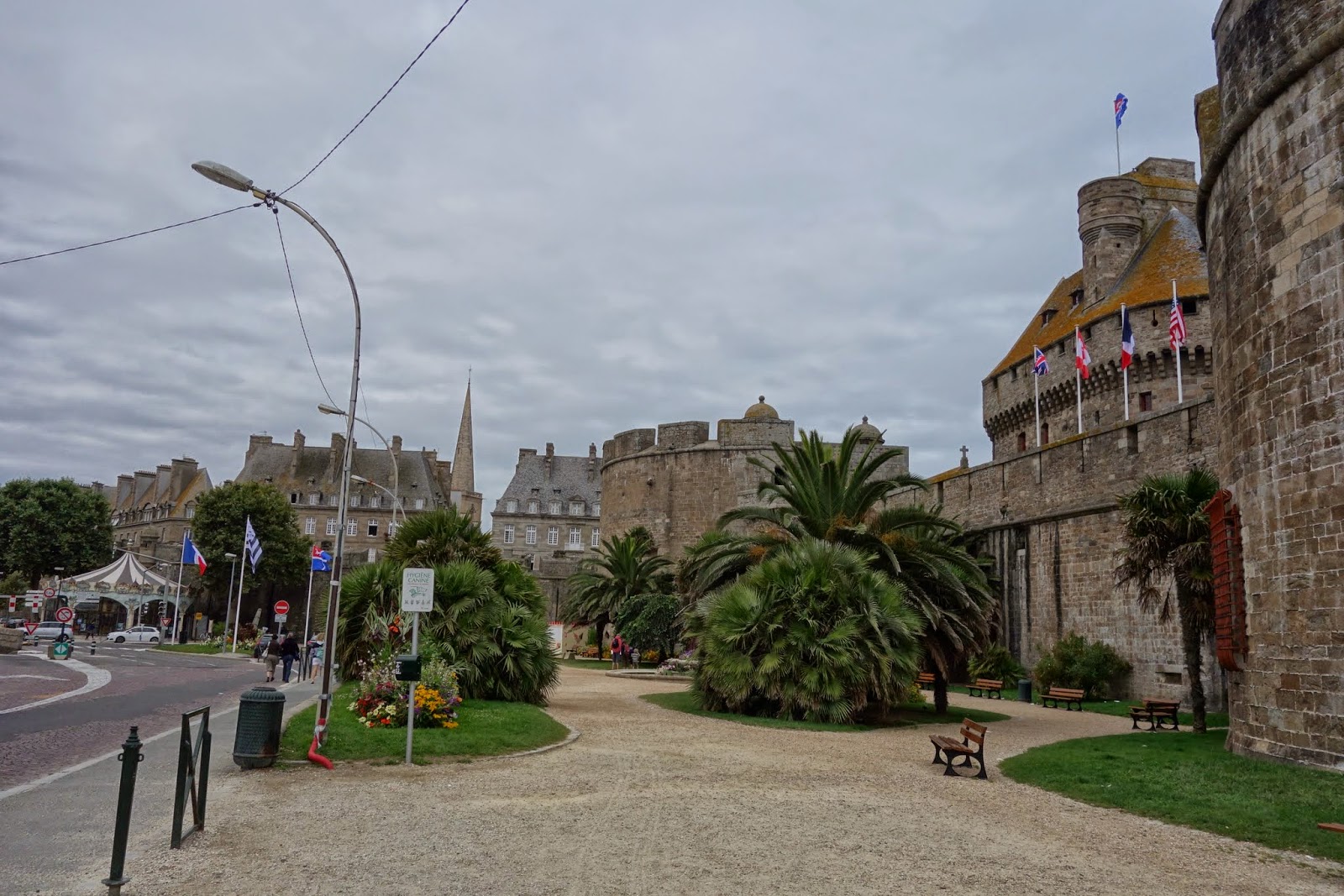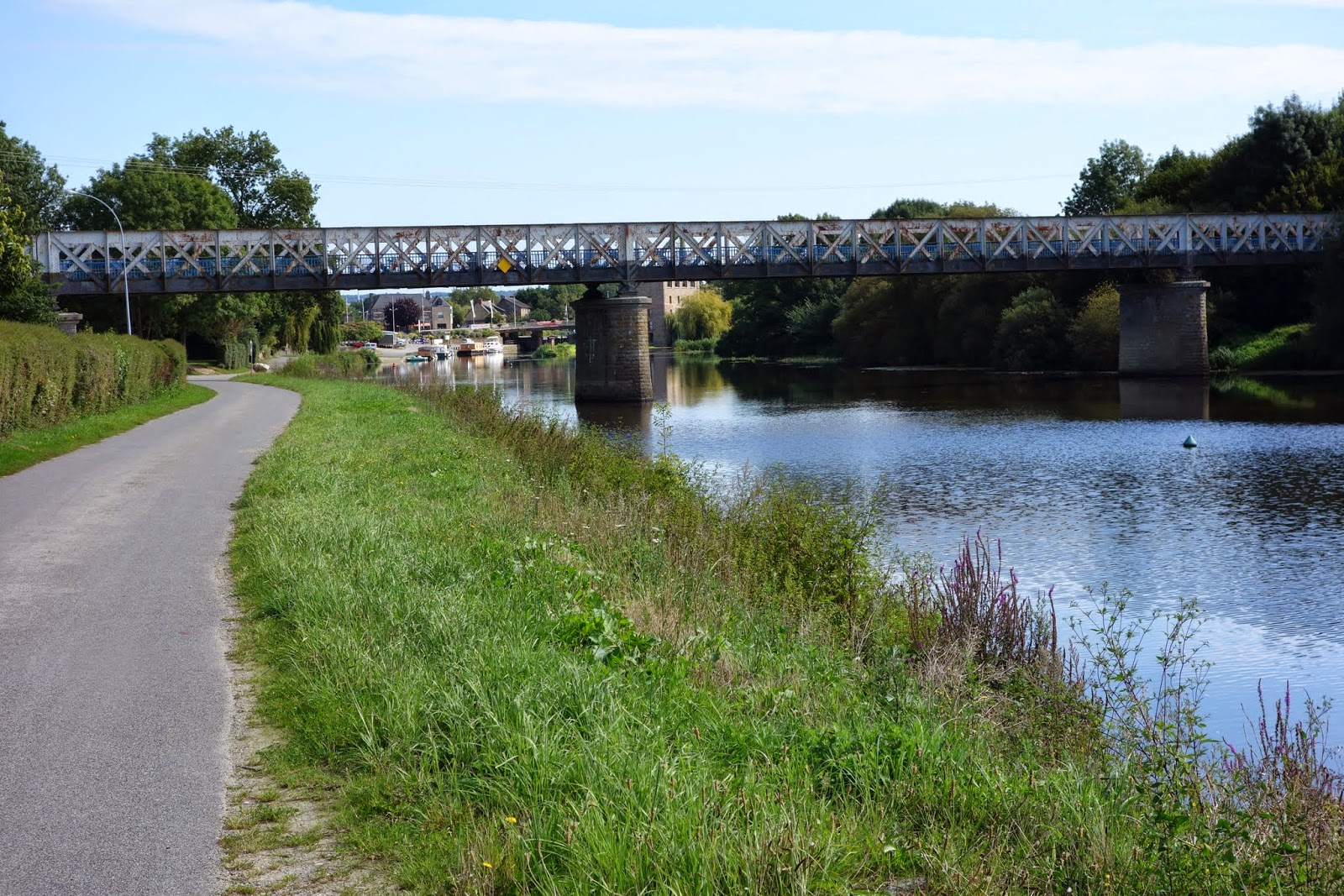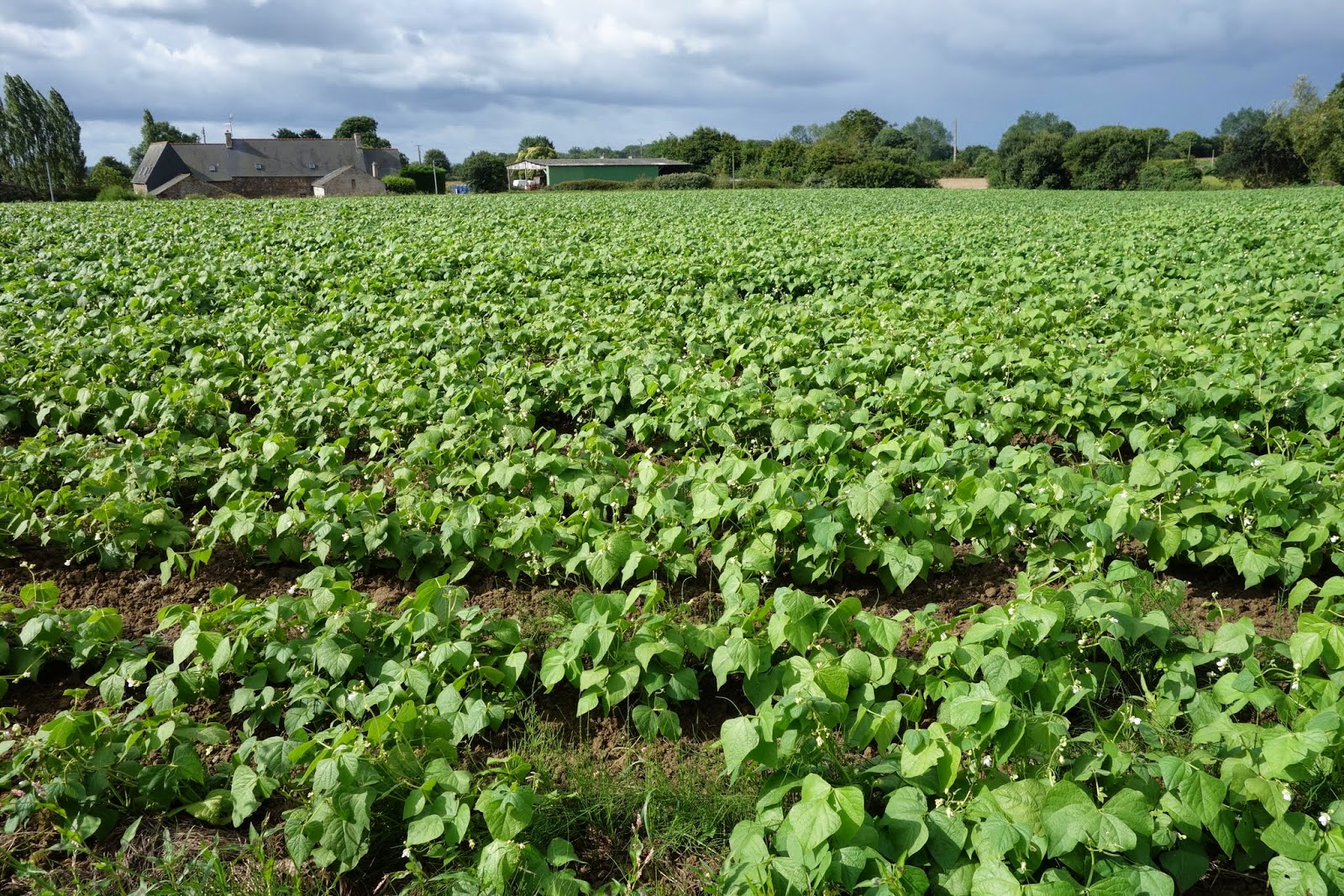Last leg - Brittany from north to south
17-21 August
St Malo to Redon
The distance we had to travel was a bit over 200km and the nature of the cycle track - old railway line and canal path - meant that we were able to make good time, even though I was under attack by various symptoms preying on my somewhat low resistance. We (and fellow-travellers) found the nights cold and we ended up under a roof more nights than in our tent.
We managed to get to St Malo itself (from the camping ground) before the crowds - this is a busy seaport, with ferries going to Jersey, Guernsey and the UK. It also has a walled portion of the city (rebuilt or restored after the war) which attracts great numbers of tourists. In fairness, there are some lovely buildings, with a castle and ramparts (Vauban) to walk around - September is a good time to do that.
There are also many mansions, dating from its colourful past and wealthy times sometimes functioning as hotels now, especially along the seafront. We explored quite a bit of the seafront on our bikes, finding a lovely cafe with sea view to have our morning coffee in. Very tranquil.
By the time we left, about 10-ish, there were already people about and we started to feel closed in, so quickly took ourselves to the boat harbour for the crossing. the view of Dinard from the boat is spectacular, with the cliff mansions. And St Malo looking back to the walled ‘fort’ is also spectacular.
We didn’t get straight onto the bike track (no arrows) but caught up with it just out of town. The path at this point is largely an old train track, which we had come up the day before, and easy to follow, even if you’re not feeling very well - I was coming down with something - so progress was very steady. I tried out a new technique - going more slowly so that I might last the distance better. It seems to work.
The first day out the camping ground we intended to go to was no longer open, and the second one not suitable either, as there were no open shops to buy food from. Eventually we arrived at a suitable site (close to 70km on) and there was even a pizzeria with well-priced pizza in the town. We didn’t get to Dinan, as there was no arrowed side-trip from the cycle path and we didn’t realise we had missed until quite a bit later. However, Dinan has a train connection, so if we want to go there one day it will be easy.
 |
| First night |
Our second day wasn’t hard, as we had reached the canal before Dinan and we just had to putter along. Still feeling far from brilliant I took the day slowly and we called it a day about 4.30pm, 35km, finding a bed and breakfast (chambre d'hôte) in a hilltop village/town just outside Rennes. Outside our normal budget, the B and B was an old presbytery (which seems to have a wide range of equivalents in English) which the current owner, a retired builder, had completely rebuilt, in the interior, over the previous 2 years. He had done an outstanding job, even covering the old concrete stairs with beautiful wooden boards, which of course don’t creak! We loved our night there and the breakfast next morning was the cherry on the cake, even including freshly-cooked crêpes and freshly-squeezed orange juice. He hasn’t finished yet, as he has plans to convert the attic into accommodation for children and grandchildren.
 |
| The garden of the Chambre d'hôte |
 |
| Second night |
No time at all to get to Rennes (16km) where we found a hotel near the station (often well-priced hotels near the station) and spent the rest of the day exploring. There is a lot to see and a return visit is on the cards. The baths, dating from about 1925, were closed and people we met later said they really are worth seeing. Beautiful mosaics and they have apparently kept the bath house as it was, though upgraded and maintained. Unlike the Rotorua Bath House (1908), which I saw in its original form as an adolescent. It has not been a functioning bath house for decades but they have retained some of the architectural features. Back to Rennes - there are lots of historical buildings here and there is a map with walks on it. The Tourist Office also has lockers, so if we had wanted to spend just the day there it would have been possible to leave the bikes and luggage and do the walks on foot (a necessity if you want to see things properly).
 |
| The baths |
The last two days were roughly 50km each, simply following down the river/canal - there is a convenient camping ground at a place called Guipry,where two Voies Vertes meet at right angles (one is on an old railway bridge so crosses above the other) just where the camping ground is placed.
And 500m down the road is a small supermarket (Leader Price), selling anything we might need. When this happens we think it is great! There is a big supermarket a bit further away but we didn’t need it and didn’t go there! We had a good look around the town - across the bridge is a separate town called Messac, and a railway station called Messac-Guipry. It’s been there since the mid-19th century and still going strong! There’s a bar installed right over the river, which looked fabulous in the setting sun and we were sorely tempted but we had already bought our meal ingredients and light fades quicker in late August. More photos from this section:
The last leg, to Redon, was both pretty and interesting. There were lots of sections beside the canal which had some dwellings on them. We would have called these baches once. (Or cribs in the far south, Tracey.) I’m not sure if we still do or not, and I’ve no idea if the French have a special name. A number of them have names, such as SAM SUFFY (ça me suffit - this is enough for me), just as a number of the traditional NZ baches did (DUN WIRKEN, for example). Maize as far as the eye could see at times, some lovely arched bridges, like those in our English-based story books in the 50s. Still livestock to be seen - in fact we saw our biggest herd yet - maybe as many as 60 cows all calmly settled in their field. (Average herd size 2006, 43 - hard to find up-to-date figures but I did see that in 2013, 21.6% of France's milk production comes from Brittany.)
 |
| Flood levels (recent) |
 |
| Maize, maize and maize |
 |
| Not unusual to see relics of the past |
Back in Redon, where we have twice camped some kilometres away from the centre, we found a hotel in the centre. The owner/manager has even been to NZ! Redon was where we started the ride around Brittany from all those weeks ago, and it was good to get back there - some sort of sense of completion. We even caught up with the people who run a sandwich/coffee bar, who had helped us out with huge ham sandwiches one evening when there was nothing handy open to buy ourselves food for the camp-ground. They remembered us too and we enjoyed a breakfast there - we had come full circle.
 |
| Redon station - end of this ride |
 |
| And the train had all the bikes it could carry - 4 more doorways like this one |






























































